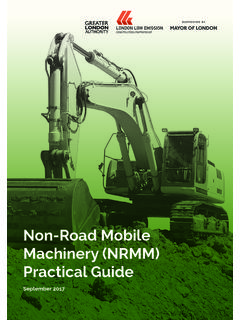Transcription of THE PRACTICAL GUIDE TO CDG FAMILIES
1 THE PRACTICAL GUIDE . TO CDG FAMILIES : A project done in collaboration between FAMILIES , researchers and Health Care experts 1. "For you, wonderful human beings, owners of a smile that make us believe in dreams, that fill us with hope and give us the" driving force "needed to fight ..". For you, the person with whom I have silent conversations, that put sense in my life and for whom I feel a misunderstood love . AD-T. Vanessa Ferreira 2. Index Prologue 5. Acknowledgements ..7. Chapter 1. The Molecular and Cellular CDG point of view ..11. Chapter 2. The CDG genetic landscape.
2 24. Chapter 3. PMM-CDG (CDG-Ia): Clinical manifestations and their management Introduction ..33. Neurologic Clinical Issues .37. Gastrointestinal ..41. Hepathology ..45. Kidney ..46. Coagulopathy .47. Endocrinology ..48. Ophthalmic manifestations .50. Orthopedics, The musculoskeletal system in CDG .57. Cardiology ..60. Hematology .62. Immunology ..64. General concerns 65. Chapter 4. CDG and the Hospital urgency .68. Chapter 5. Diagnostic tools 70. Chapter 6. Treatment and therapies 73. 3. Chapter 7. CDG management of development .75. Chapter 8. The importance of research and communication and dissemination in Rare Diseases.
3 84. Glossary 90. The empowerment of CDG patient's voice ..93. 4. Prologue When a person faces, for the first time, the words Congenital Disorders of Glycosylation , CDG , and Rare Genetic Disease , many concerns are raised. To have a rare genetic disease means having a diagnosis that is not well recognized or understood by the medical and scientific communities as there are so many different disorders. In fact, it is estimated that there are between 6,000-8,000. different rare diseases. Obtaining the correct diagnosis very often means many years of waiting! Beyond the diagnosis, treatment for symptoms which can improve the quality and even the life expectancy of an affected individual, can take years.
4 It is important to bear in mind that usually these diseases are chameleon- like. Thus, they are characterized by a broad range of symptoms that vary not only from disease to disease but also from patient to patient suffering from the same disease. Relatively common symptoms can hide underlying rare diseases, leading to misdiagnosis. The Portuguese Association for CDG and other Rare Metabolic Diseases (Associa o Portuguesa CDG e outras Doen as Metab lica sRaras (APCDG-DMR), together with the Spanish Association for the same disorder aims to educate FAMILIES and the public about Rare Metabolic Diseases, mainly focused on Congenital Disorders of Glycosylation.)
5 In addition, we will advocate for the rights of this group, and aim to improve the quality of life of individuals with CDG and other rare metabolic diseases. Being part of the Association represents an opportunity to unite our voices in one direction: to help FAMILIES with the same problems and to contribute to increasing the medical and scientific knowledge about these disorders. It is my honor and privilege to present to you this project that I have wanted to establish for a longtime, meanwhile I started to write my thesis! Everything started with an e-mail directed to Professors Jaak Jaeken and Gert Matthijs, Dr.
6 Paz Briones, Dr. Rafael Artuch, Dr. C lia P rez-Cerd and Dr. Bel n P rez Due as sent the 26th of July 2010 (12:46 am!). Their response was positive and extremely 5. supportive. Furthermore, other collaborators demonstrated their willingness to participate in this project. We aim to share many perspectives on Congenital Disorders of Glycosylation with the CDG community and the broader society. Think Metabolic, Think CDG! Vanessa Ferreira, PhD. (Portuguese Association for CDG and other Rare Metabolic Diseases). 6. Acknowledgements This " PRACTICAL GUIDE for CDG FAMILIES is the direct result of many people who have participated in meetings, the exchange of e-mails, the elaboration of texts, multiple corrections and translations, and provided comments and proofreading for final approval!
7 To all of you, I want to express my deepest and sincere THANKS! I want to especially express my sincere gratitude to Dr. Donna Krasnewich, who offered invaluable comments, enthusiastic revision and input to this important resource targeted to CDG FAMILIES ! I sincerely thank Dr. Maria Antonia Vilaseca, Dr. Bel n P rez Due as, Professor Jaak Jaeken, Andrea Berarducci and Merell Liddle, for their support, patience and continued interest during the preparation of this work. I would like to extend my gratitude to CDG FAMILIES , because many of these questions were compiled by the Spanish and Portuguese parents through an informal survey, and many others are based on my personal curiosities.
8 Finally, I want to thank all people who believe in the voice of individuals with CDG! To all of you, THANK YOU! 7. Original Idea, Project Coordinator, Design and Layout: Vanessa Ferreira (Associa o Portuguesa CDG e outras Doen as Metab licas Raras). Translation Revision of overall translation and content: Donna Krasnewich , (Program Director, NIGMS, NIH, USA). Translation: Bel n P rez-Due as, Melisa Stitzman, Merell Liddle, Andrea Berarducci and Vanessa Ferreira. List of collaborators who participated as volunteers in the preparation of this GUIDE (listed in the order of appearance in the chapters of the GUIDE : Maria Antonia Vilaseca (Guia Metab lica, Hospital Sant Joan de D u, Barcelona, Espa a).)
9 Vanessa Ferreira, (Associa o Portuguesa CDG e outras Doen as Metab licas Raras, Portugal) and Liliana's sister. C lia P rez-Cerd , (Centro de Diagn stico de Enfermedades Moleculares, Centro de Biolog a Molecular, CIBERER, Universidad Aut noma de Madrid, Spain). Bel n P rez Gonz lez , (Centro de Diagn stico de Enfermedades Moleculares, Centro de Biolog a Molecular, CIBERER, Universidad Aut noma de Madrid, Spain). Jaak Jaeken, , (Center for Metabolic Disease, Katholieke Universiteit Leuven, Belgium). Bel n P rez Due as, , (Neurology Department Hospital Sant Joan de D u, Barcelona, Espa a).
10 Ruth Garc a Romero, (Gastroenterology, Hepatology and Child nutrition Section, Metabolic Diseases Unity, Hospital Sant Joan de D u, Barcelona). 8. Mercedes Serrano, , (Neurology Department Hospital Sant Joan de D u, Barcelona, Spain). Daisy Rymen (CDG student), Center for Human Genetics, Gert Matthijs Laboratory, Leuven, B lgica). Luis Terricabras Carol, , (Orthopedic Unity, Hospital Sant Joan de D u, Barcelona). Mario Sanz Cuesta, (Pediatrician Unity, Parc Sanitari Sant Joan de D u, Sant Boi de Llobregat). Donna Krasnewich , (Program Director at the National Institute of General Medical Sciences, USA).









